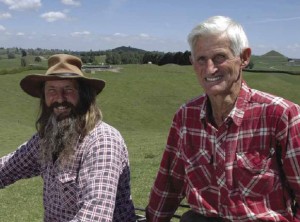You must be logged in to post a comment.
Archive
‘Our appreciation for dicalcic stemmed from a desire for improved stock health. We weren’t comfortable with the effect high analysis fertilisers seemed to be having on the stock, so that’s when we began dealing with Hatuma.
| Farm Size | 70ha |
|---|---|
| Stock | 180 cows 2.6 cows/ha, 930ms/ha (av) |
| Years of dicalcic use | 12 |
| Autumn Dressing | No 410 % Salt (0:3:0:4) @ 400kg/ha |
| Spring Dressing | Dicalcic (0:4:0:6) @ 300kg/ha + Cropfine @ 150kg/ha |
The results in the fi rst 12-18 months were outstanding. We could see the change happening in the pasture’s colour and the improved soil condition,’ says Nigel.
‘It became a lot more friable once we shifted away from the acidic fertilisers. It was like the earthworms arrived with the dicalcic,’ says Bernie.
‘The soil’s condition is absolutely paramount to our business,’ says Nigel, ‘even more so as farmers become increasingly regulated with fertiliser practices. With the local lake here, and the market demand for more chemical free produce, whatever is grown off this farm, its success lies within the agronomy of the soil and how we treat it. It begins and ends there.
The improvement in the natural soil fertility has meant pugging has been reduced to a point where if it does, the recovery is very quick. I now fi nd I can leave stock longer on the heavier parts of the farm during the wet winter conditions.’
‘We’ve also noticed less run-off when it rains, it just seems to soak it all in,’ says Bernie. ‘In winter the entire farm just works like a sponge, it absorbs a horrific amount of water. It would have to be an exceptional amount of rain for water to run off this property. Because of this, we also know any litter from the stock is absorbed and processed before it can become a pollutant.’




 520 Maharakeke Rd, Waipukurau
520 Maharakeke Rd, Waipukurau

 0800 80 65 65 /
06 858 8567
0800 80 65 65 /
06 858 8567 06 8588018
06 8588018
Leave a Reply